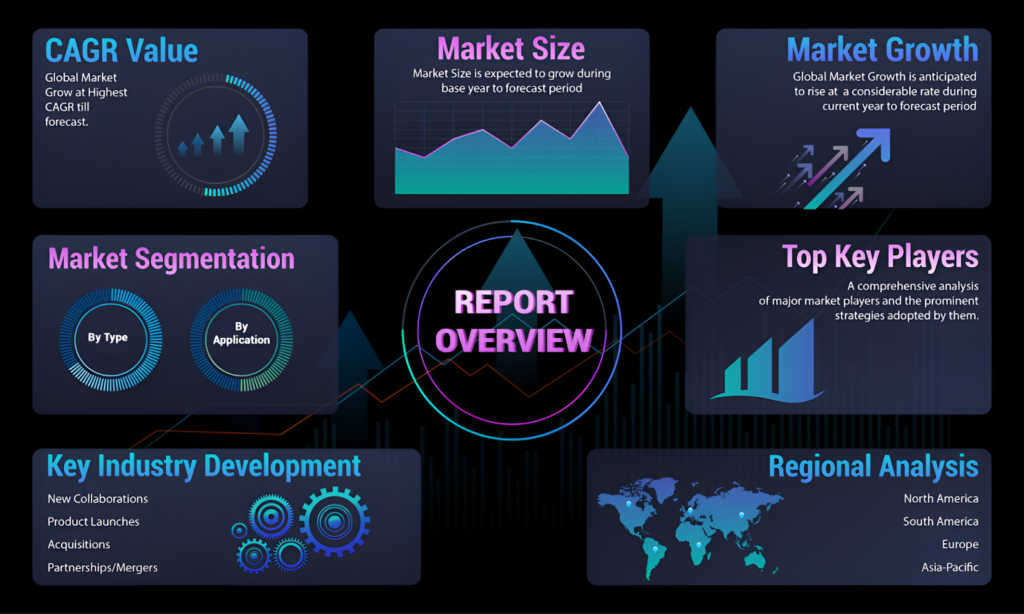Table of Contents
Introduction
In the rapidly evolving digital marketplace of 2024, headless commerce is emerging as a beacon of innovation, redefining the boundaries of online retail. Gone are the days of one-size-fits-all e-commerce platforms.
Today’s digital era demands flexibility, speed, and a seamless user experience across various devices and channels. But what exactly is headless commerce, and why is it causing a revolution in the retail world?
This comprehensive guide delves deep into the core of headless commerce, exploring how this cutting-edge approach separates the frontend presentation layer from the backend e-commerce functionality.
Key Statistics
- Headless commerce is anticipated to grow at a CAGR (Compound Annual Growth Rate) of 20.5% through 2027, reaching $32.1 billion
- Headless commerce platform users see a 23% reduction in bounce rate.
- Digital leaders intend to spend 25% more on digital experiences including Headless CMS in the coming year.
- Headless commerce adoption has grown by 50% in the last two years.
- By 2025, 35% of businesses will move from monolithic to headless commerce platforms.
Understanding Headless Commerce

Headless commerce refers to an approach that divides the front end and back end of an eCommerce site. This separation enables independent development on either side, providing unparalleled flexibility and customization.
- The adoption of a headless commerce strategy allows businesses to combine systems in a modular fashion, which enables customization of user experiences on the front end without any impact on backend operations.
- Furthermore, headless commerce prioritizes scalability, a crucial aspect that enables businesses to effectively implement and expand an omnichannel sales strategy without incurring significant technical debt or disrupting backend operations.
Architecture Distinction

- Front End (“Head”): The “head” refers to the user interface layer that customers interact with, such as websites or mobile apps.
- Back End (“Body”): The “body” includes server-side components such as the database, order management systems, and application logic that power commerce functionalities.
Headless commerce separates the front end and back end, allowing them to operate independently. APIs facilitate communication between the two layers for data exchange and functionality sharing.
API-Driven Customization
APIs play a pivotal role in headless commerce, serving as conduits for data and functionality between the head and body. This architecture allows businesses to craft bespoke shopping experiences tailored to various platforms. For instance:
- A retailer could leverage APIs to pull product information, reviews, and inventory levels into a mobile app, offering a streamlined shopping experience tailored to mobile users.
- The same APIs could feed into a social media platform, enabling direct purchases from a social media post or ad, thereby creating a seamless shopping experience directly within users’ social feeds.
Key Components and Technologies

The move to headless commerce is supported by a suite of technologies and components designed to maximize the potential of this architecture.
Essential Components
- APIs (Application Programming Interfaces): The linchpin of headless commerce, enabling seamless communication and data exchange between the front end and back end.
- Content Management Systems (CMS): These systems allow businesses to create, manage, and optimize content across various platforms without needing to adjust the back end for each change.
- Digital Experience Platforms (DXP): DXPs provide comprehensive tools for creating, managing, and optimizing digital experiences across multiple channels, incorporating CMS capabilities but extending further into personalization and user journey orchestration.
Emerging Technologies
- Artificial Intelligence (AI): AI can personalize the shopping experience by analyzing user data and behavior to present tailored product recommendations and content.
- Augmented Reality (AR): AR enhances online shopping by allowing customers to visualize products in their environment, increasing satisfaction and confidence.
- Internet of Things (IoT): IoT devices can communicate with commerce platforms to enable new purchasing methods. For instance, smart refrigerators can reorder groceries when supplies are low, via APIs.
Advantages of Headless E-commerce

Headless commerce, by decoupling the front-end presentation layer from the back-end e-commerce functionality, offers several compelling advantages that can significantly impact a business’s bottom line and customer satisfaction. Here are the key benefits:
Customization and Personalization
- Tailored Experiences: Headless commerce uses APIs to personalize shopping experiences with unique content, offers, and product recommendations based on customer behavior and purchase history.
- Design Freedom: Designers have the freedom to build creative, innovative user interfaces without being constrained by the back-end logic, leading to more engaging and differentiated brand experiences.
Omnichannel Opportunities
- Seamless Integration: Headless commerce simplifies e-commerce integration across various channels, ensuring consistent customer experience.
- Quick Adaptation: Businesses can adapt quickly to new channels or technologies without overhauling their entire e-commerce system, keeping up with market trends and meeting customer expectations.

Improved Customer Experience
- Faster Performance: Headless commerce allows for independent optimization of the front-end and back-end, resulting in faster page loads, smoother browsing, and better customer engagement.
- Enhanced Interactions: Businesses can enhance the online shopping experience with interactive features and AR experiences.
Improved Conversion Rates
- Optimized User Journeys: The ability to personalize the shopping experience enhances customer satisfaction, optimizes the path to purchase, and reduces abandonment rates.
- Data-Driven Decisions: Businesses can continuously refine their strategies with access to detailed customer data and behavior patterns. This improves targeting and personalization efforts, leading to higher conversion rates.
Improved Flexibility
- Rapid Iteration: Businesses can test and deploy changes to the front end quickly and efficiently, allowing for rapid iteration and A/B testing to find the best strategies for engagement and conversion.
- Scalability: Headless commerce platforms can scale more easily as the front end and back end can scale independently, ensuring a robust and responsive system under varying loads.
Implementing Headless Commerce in 2024

Adopting headless commerce in 2024 involves a strategic overhaul of both the technological infrastructure and the mindset with which businesses approach e-commerce.
The transition requires careful planning, a clear understanding of objectives, and a commitment to navigating the challenges that come with adopting a more flexible, future-proof commerce architecture. Here’s a roadmap for businesses ready to leap.
Strategic Planning
- Review your e-commerce setup to understand its limitations in handling data flow, integration capabilities, and user experience across channels.
- Clearly state your goals to guide technology and partner selection for headless commerce.
- Determine the technical requirements based on your goals, including APIs, content management systems, and digital experience platforms.
- Consider the need for scalability, personalization capabilities, and multi-channel support.
- Research and select the technologies that align with your technical requirements and goals.
- Look for flexible, scalable solutions that support a wide range of integrations and have a robust developer community.
- Identify and select partners with expertise in headless commerce implementations.
- Consider their track record, support offerings, and compatibility with your chosen technologies.
- Create a detailed implementation roadmap, outlining phases, milestones, and timelines.
- Include critical steps such as platform setup, API development, front-end development, and testing.
- Ensure your team has the skills needed to manage and evolve your headless commerce platform.
- This may involve training existing staff or hiring new talent with the requisite expertise.
Challenges and Considerations

Technical Complexity
- The decoupled nature of headless commerce can introduce technical complexity, requiring a deeper understanding of APIs and system integration.
- Solution: Invest in training for your development team or collaborate with experienced partners who can guide the implementation process and provide ongoing support.
Skilled Development Team
- Implementing and maintaining a headless commerce platform demands a team with a diverse skill set, including front-end and back-end development, API management, and cybersecurity.
- Solution: Build a multidisciplinary team or work with external agencies that specialize in headless commerce. Leverage the knowledge and resources available in developer communities.
Integration Challenges
- Integrating existing systems with a new headless architecture can be challenging, especially if those systems are outdated or use incompatible technologies.
- Solution: Conduct a thorough evaluation of your current systems to identify potential integration issues. Use middleware or custom adapters to facilitate communication between systems.
Cost Considerations
- Initial setup costs for headless commerce can be higher due to the need for specialized development and potentially more complex infrastructure.
- Solution: Develop a clear ROI projection that accounts for the long-term benefits of increased flexibility, improved performance, and enhanced customer experience. Consider a phased approach to spread out costs.
Trends and Innovation
Voice Shopping
- The integration of voice commerce capabilities is a burgeoning trend within the headless commerce space.
- Businesses are implementing voice-enabled interfaces that allow customers to shop, place orders, and track deliveries using voice commands through smart speakers and virtual assistants.
- This innovation opens up a new, convenient channel for customer interaction.
Machine Learning Personalization
- Machine learning algorithms are increasingly being used to analyze customer data and behavior, enabling businesses to offer highly personalized shopping experiences.
- From personalized product recommendations to individualized marketing messages, machine learning is making it possible to tailor the shopping experience to each customer’s unique preferences and behaviors.
Augmented Reality (AR) Shopping

- AR technology is being embraced within headless commerce frameworks to offer immersive shopping experiences.
- Customers can use AR to visualize products in their own space before making a purchase, significantly reducing the uncertainty that often accompanies online shopping.
- This technology is particularly impactful in the home decor and fashion industries.
Blockchain for Transparency and Security
- Blockchain technology is being explored for its potential to enhance transparency and security in headless commerce transactions.
- By facilitating secure, transparent transactions and product authentication, blockchain technology can build trust and loyalty among customers, especially in markets where counterfeit goods are a concern.
By embracing headless commerce, businesses are not only able to improve their operational efficiency and customer experiences but are also well-positioned to adapt to future technological advancements and consumer expectations.
The Future of Headless Commerce

Headless commerce is becoming increasingly important in the digital economy. As we look toward the future, businesses can employ various strategies to stay ahead in this dynamic landscape.
Increased Adoption Across Industries:
- Headless commerce was initially popular in the retail sector, but it is expected to expand its reach into other industries such as services, manufacturing, and B2B sectors.
- This growth will be driven by the demand for digital platforms that are flexible, scalable, and can adapt to diverse business models and customer expectations.
Advancements in Technology and Integration:
- The rise of AI, machine learning, and IoT will further enhance the capabilities of headless commerce platforms.
- These technologies will enable more personalized shopping experiences, improved inventory management, and seamless integrations with other digital tools and platforms, making the architecture more robust and versatile.
Focus on Omnichannel Experiences:
- As customers interact with brands through various channels, headless commerce will be instrumental in providing consistent and customized experiences across all touchpoints.
- This will encompass not only online and mobile platforms but also extend to emerging technologies such as voice assistants, smartwatches, and AR/VR experiences.
Conclusion
Headless commerce is a significant shift in how businesses approach digital engagement and sales. It offers unparalleled flexibility to innovate, customize, and rapidly adapt to changing consumer preferences and technological advancements.
By embracing a headless approach, companies can leverage the latest developments in AI, IoT, and other emerging technologies to create seamless, engaging customer journeys across multiple touchpoints.
However, the journey toward adopting headless commerce is not devoid of challenges. It requires a significant shift in mindset, investment in the right technologies, and the cultivation of new skill sets among teams. For businesses aiming to thrive in 2024 and beyond, embracing headless commerce is not merely an option but a necessity.

Meerashri Thakar is a Digital Marketer and Content Marketing specialist with experience in generating SEO-optimized content and has made content on Product, Shopify, Drupal, Digital Marketing, etc.



